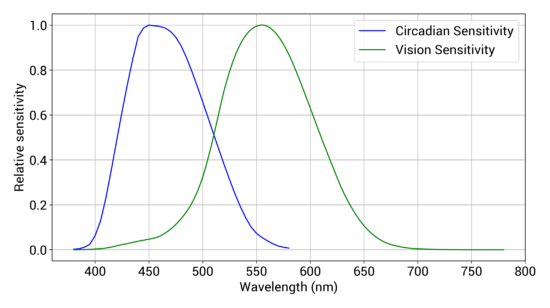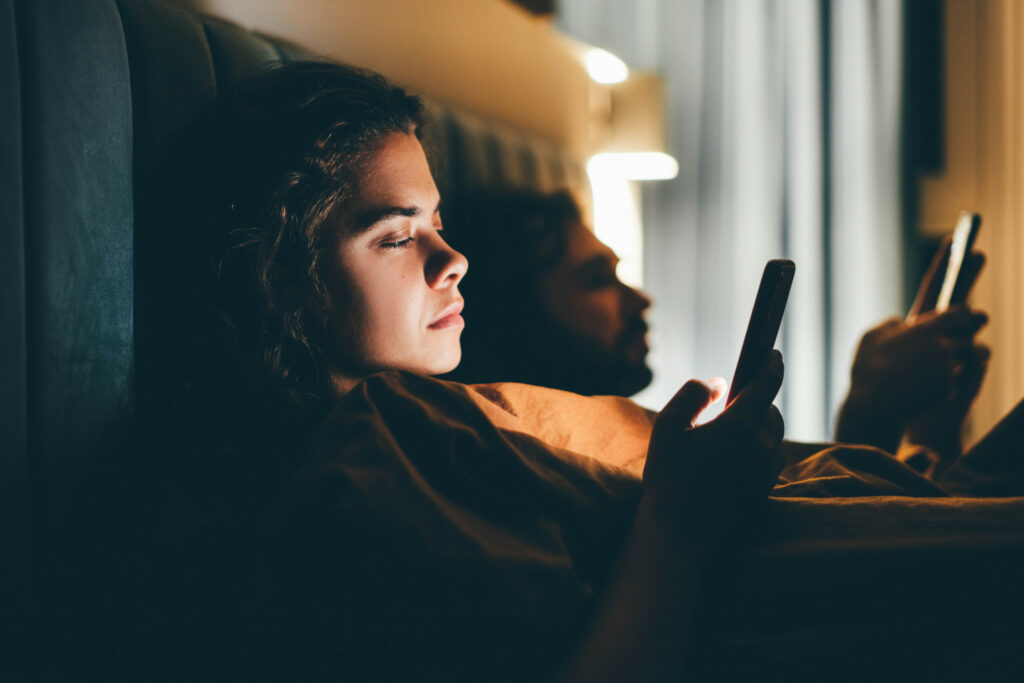
Exposure to blue light has greatly increased in our environment since the arrival of light-emitting diodes (LEDs). This has raised concerns about its potential harmful effects on eye health and its influence on sleep.
To address this issue, smartphone manufacturers have implemented eye comfort and care in their strategies, and most devices now include a night mode or blue light filter feature. Because users are paying attention to visual comfort, DXOMARK has designed the Eye Comfort Label to evaluate the key factors that affect our visual experience and comfort, such as blue light filtering.
What exactly is blue light? What are the risks of exposure? Is the daily use of your devices really safe? This article offers a deep dive into these topics.
What is blue light?
Light can be described as radiation that contains multiple components. Certain portions of the light spectrum are invisible to the human eye, such as ultraviolet and infrared. The visible spectrum can easily be observed when sunlight passes through a raindrop. It splits into multiple colors, creating a rainbow.
Each component of the light spectrum is described by its energy and its wavelength. Every visible color of the spectrum is associated with a specific wavelength (from 380 nanometers to 780 nanometers). The spectrum of light is a representation of all the wavelengths and associated intensities, describing qualitatively any light emission.
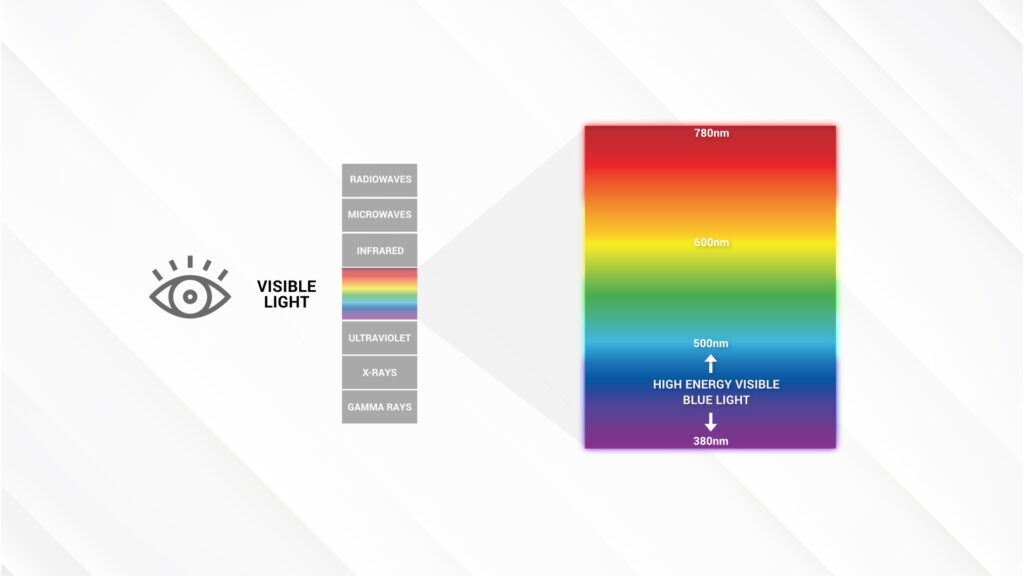
The relation between energy and wavelength
The lower the wavelength the more energetic the light emission is. Therefore, blue light is a high-energy visible (HEV) light with wavelengths ranging from approximately 380 to 500 nanometers. It is emitted by both natural sources, like the sun, and artificial sources, such as digital screens (computers, smartphones, tablets, and TVs), LED lighting, and fluorescent lights.
In recent years, incandescent lamps, which have been highly used in homes and offices, are being replaced by more energy efficient LED and fluorescent lamps. These recent light sources present an unbalanced spectrum with a strong component in the blue region, while the red component remains low.
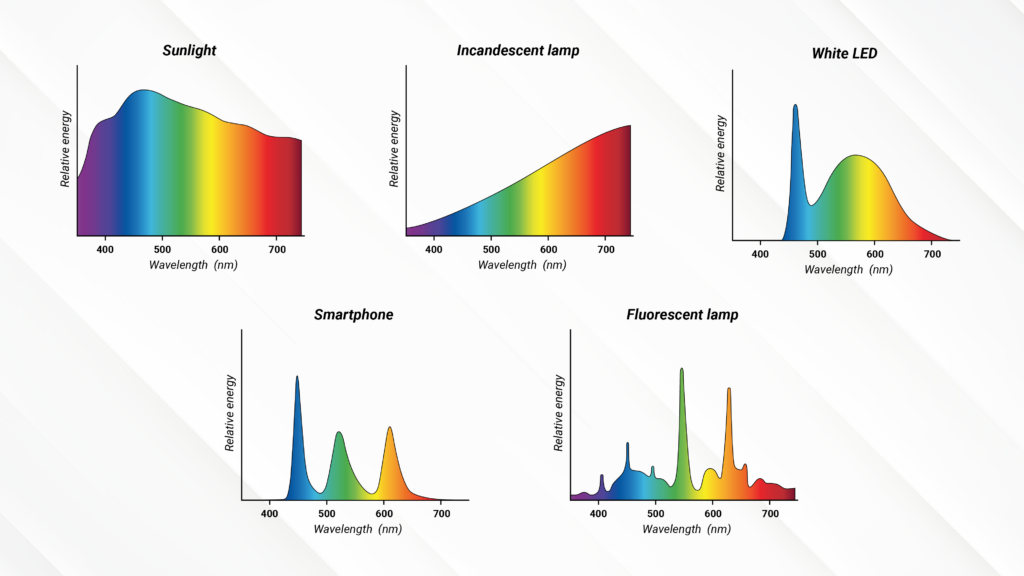
To allow vision, light penetrates deep into the eye up to the retina. Blue light has been linked to various effects on eye health and sleep patterns.
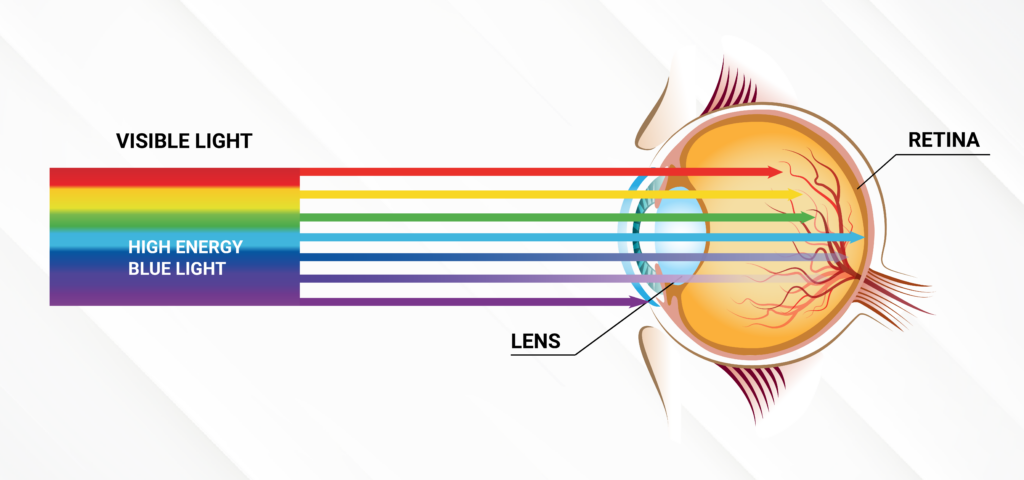
Effect on the circadian rhythm
The light spectrum changes throughout the day. In the morning, the light of the sun is bluer and becomes redder in the evening. Many biological functions of living things, like plants, animals and humans, are synchronized with the solar cycle. This mechanism, the circadian rhythm, underpins all circadian functions in humans, like hormone secretion, eating behavior, and body temperature.
Blue light is also known to be crucial in regulating the body’s circadian rhythm, influencing wakefulness and sleep cycles. As the evening natural light is getting redder, our body synthesizes melatonin – the hormone responsible for making you sleepy. When exposed to blue light, our body is tricked because blue light is associated with the natural morning light, thus it inhibits the production of melatonin, disturbing our sleep cycles.
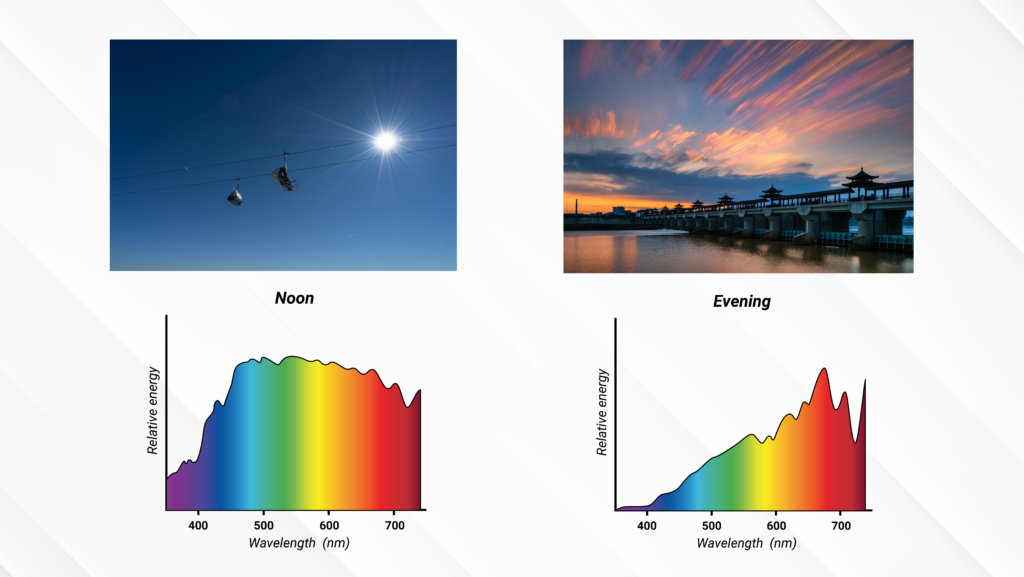
When using a smartphone at night, even just a few minutes of blue light exposure are enough to disrupt the quality of your sleep, according to Francine Behar-Cohen, a professor of ophthalmology at Cochin Hospital and director of research at the French National Institute of Health and Medical Research (INSERM) at the Cordeliers Research Center in Paris. 1Francine Behar-Cohen – Environnement lumineux et santé visuelle (youtube.com)
Blue light hazard
Because blue light is a high-energy visible (HEV) light, careless exposure to blue light can damage tissues.
Regulations have been defined based on acute exposure to blue light (as in LASER): A maximum energy threshold is defined to prevent permanent damage. However, smartphone light emissions are nowhere near that maximum threshold. Theoretically following that regulation, smartphones cannot cause eye damage.
Recent studies2https://bjo.bmj.com/content/97/4/389 3https://pubmed.ncbi.nlm.nih.gov/38227312/ have shown a correlation between exposure to blue light and Age-Related Macular Degeneration (ARMD), an eye condition resulting from damage to the retinal cells, emphasizing that prolonged exposure to low-level blue light could also be harmful to human health.
A simulation, in the context of a study lead by the ANSES4Annex 4 of an ANSES Report “Effets sur la santé humaine et sur l’environnement (faune et flore) des diodes électroluminescentes (LED) https://www.anses.fr/fr/content/avis-et-rapport-de-lanses-relatif-aux-effets-sur-la-sant%C3%A9-humaine-et-sur-lenvironnement , goes further, evaluating that LED lighting and displays can add up to 43% of additional phototoxic blue light compared to natural light over a full year, based on a typical day of an office worker.
However, the potential toxicity of long-term cumulative exposure and the dose-response effect are currently unknown.
How the smartphone industry is addressing blue light
Most devices feature a blue light filtering (BLF) function that induces a yellowish cast on the display (due to the blue component of the spectrum being reduced). We found that blue light is filtered on devices in three different ways:
-
- manual on-off control;
- programming;
- adaptation of the display spectrum throughout the day.
Those features are not necessarily available by default and could require a specific user action. By default, the color shift when activating the BLF is limited, which limits the protection. A slider is usually provided to tune protection and rendering according to user preference.
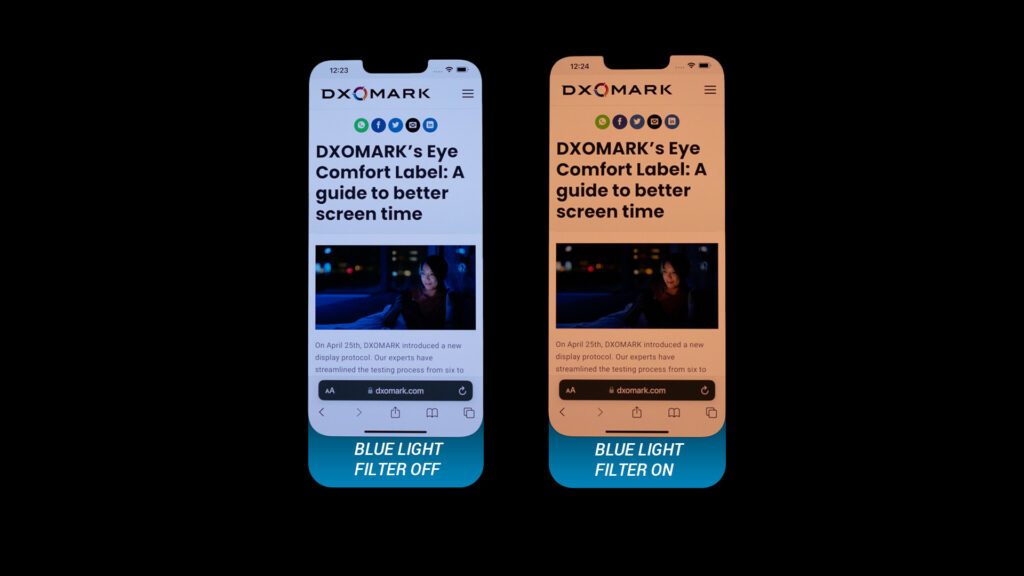
Blue light protection is related to the color of the white point, which is heavily influenced by regional preferences. For example, users in Europe and the US tend to prefer warmer colors, while users in Asia are more accustomed to viewing displays with cooler tones and more blueish displays. One of the reasons there is a stronger level of attention on blue light in Asia is because users there are naturally more exposed to such screens on a daily basis.
Auto-brightness mode also participates in blue light protection by continually adjusting the luminance level to the ambient lighting conditions. Excessive exposure to display emission is thus avoided in situations where a bright display is not required.
Measuring the influence of blue light
To measure the strength of blue light, DXOMARK uses the circadian action factor (CAF) to evaluate the impact of smartphones on the human circadian rhythm.
The Circadian Action Factor metric represents the ratio of the total amount of light influencing the circadian rhythm to the total amount of light useful for vision. It is calculated from the tested light spectrum emitted by the device.
How does it work? Three steps:
-
- At DXOMARK, we first measure the spectrum of the light emitted by the tested screen displaying a white image, using a spectrophotometer. The spectrum is then weighted with the wavelength sensitivity of the human eye. From this weighted spectrum, a value is calculated that represents the total amount of “useful” light for vision.
- A similar technique is used to compute the amount of light influencing the circadian rhythm by weighting the spectrum with the circadian wavelength sensitivity.
- The CAF is the ratio of these two values.
Blue light in the DXOMARK Eye Comfort Label
In April 2024, DXOMARK experts introduced the Eye Comfort Label along with a new display protocol. The label is designed to assess factors considered critical to the viewing experience, such as industry initiatives to reduce blue light emissions through night modes, blue light filtering, or a shift to warmer colors.

For blue light filtering, the circadian action factor (CAF) threshold is set at 0.65. Why this value? Because it is comparable to that of a regular white LED light source, which is commonly used in our households.
Conclusion
Blue light exposure can potentially have strong effects on health and circadian rhythm.
Although smartphone makers are aware of the situation and propose solutions in their products to limit blue light intake, DXOMARK recommends that users pay specific attention to those feature settings because they might not be activated by default.
As we spend more time on our smartphones and other screens, their impact on our health is becoming more significant. Therefore, DXOMARK prioritizes ongoing discussions with the scientific and medical communities to investigate all potential adverse effects that can impact us and our children.


